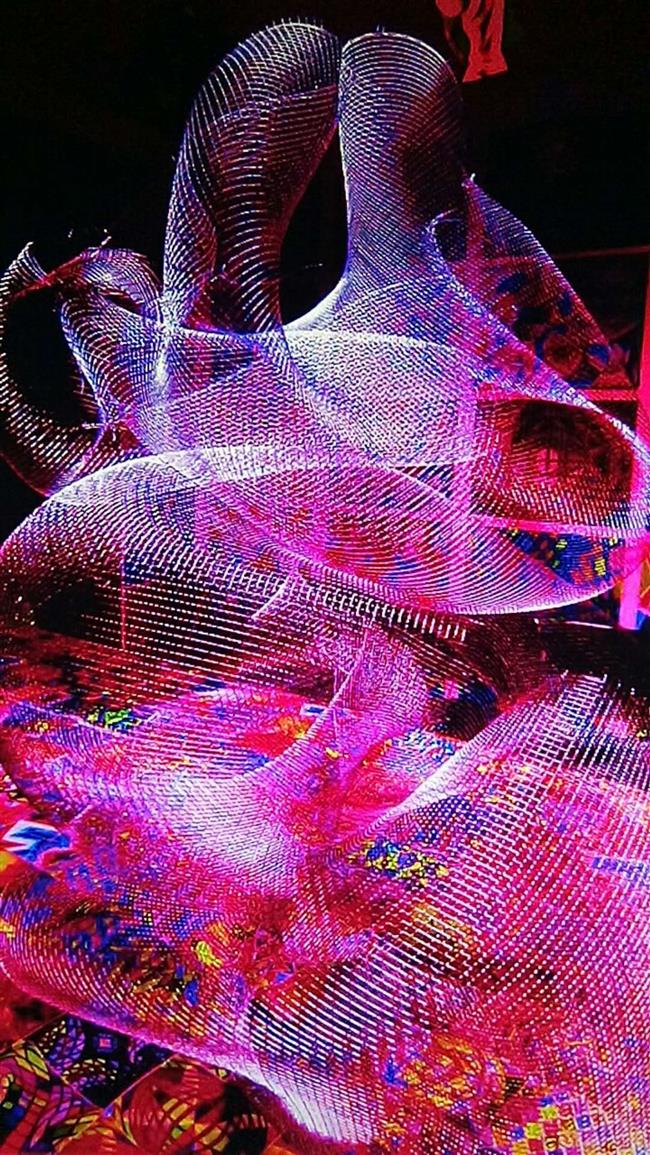German museum to display work of Shanghai's imaginative children

A collage of works created by students at artist Zhou Wenfu's Children's Imagination Art Center.
Zhou Wenfu possesses some of the traits a “quirky” artist is supposed to have — long hair, a reserved character and a train of thoughts that often lapse into meditation or monologue — but just as quick, he will suddenly shift back to the real world.
Zhou could have embarked on a smoother career path as a professional artist after he rose to fame in the Shanghai art community in the 1980s, but he changed course to establish the city’s first Children’s Imagination Art Center.
This summer, Zhou and 20 of his students will visit the Ludwig-Doerflyer Museum in Schillingsfurst, Germany, to stage a monthlong exhibition which will feature nearly 200 artworks created by the children.
The group will also tour art museums, art institutes and schools in France, the Netherlands and Belgium as part of an exchange program.
“My initial purpose for this imagination art center was not to nurture artists, but to inspire the imagination and creativity of the Chinese kids,” Zhou says. “Now I am proud that children who studied at my center have grown up to conductors, architects, musicians and aircraft manufacturers.”

Zhou Wenfu (left), Shillingsfurst Mayor Michael Trzybinski (center) and Wang Haiyan, director of the Ludwig-Doerflyer Museum, show a creative work by one of Zhou's students at his Children's Imagination Art Center.
In 2015, Zhou was invited by Newcastle University to share his expertise with his peers in the UK. He visited four schools to exchanged ideas with teachers and students interested in his “new art education mode” in China.
“I want to take my children to see what their peers are doing and what the Western masterpieces look like,” he says. “At the same time, it also brings a chance for us to have our works exposed overseas.”
Stepping into his art center, one is immediately overwhelmed by an avalanche of paintings that are abstract, dynamic visual images with sharp color contrasts.
Sometimes it’s hard to figure out what some of the pictures are about. The irregular patterns with shocking colors can leave viewers trapped in a mysterious labyrinth of paint.
Some are huge, over-sized fabric prints cascading from the ceiling while others are exquisite and delicate and meticulously aligned on the walls.
“These were all painted by children aged from 3 to 13,” Zhou says proudly, pointing to the brightly colored art pieces.
To many adults, these might be dismissed as just doodles or daubs. However, in the eyes of Zhou, who has studied art education and children psychology for years, the paintings are a true reflection of a child’s mind, personality, past experience and future dreams.
In contrast to some prevailing art training classes for children, Zhou says he won’t teach children how to paint through technique and skill.
“These would only smother their imagination. I especially feel uncomfortable to find many little children start to learn sketches,” he says. “In fact, what they need is a curious heart on how to appreciate art rather than be a painting machine.”

Children's work

Children's work
Over the years, Zhou has held various children’s art exhibitions in unusual places — a rusty factory, a dilapidated warehouse, a vacant swimming pool or at the beach.
“Art should not only be restricted to shrine-like museums,” he says. “It exists in the sunshine and air, accessible to everyone.”
Zhou is a prime example of breaking the shackles of convention. Whether on canvas or rice paper, he paints with passion. His abstract artworks are filled with vitality and wildness. But now he is focusing on creating installations through light and other new materials.
“Sometimes I work late in the evening, and I really enjoy the pleasure of being a pure artist,” he says.
However, some of his installation works have to be disassembled afterward.
“I don’t have too much space to store them, but I take detailed picture of each work, and these pictures are also my works,” he says.
How to store the children’s artworks created over the years is also a big headache for Zhou.
“I have to store them in my suburban apartment because they are a valuable asset,” he says. “I am dreaming of opening a children’s imagination center in a huge museum-like space that can display their art. Children are such a treasure, and this should be shared by more people.”

One of Zhou Wenfu's large installation works















